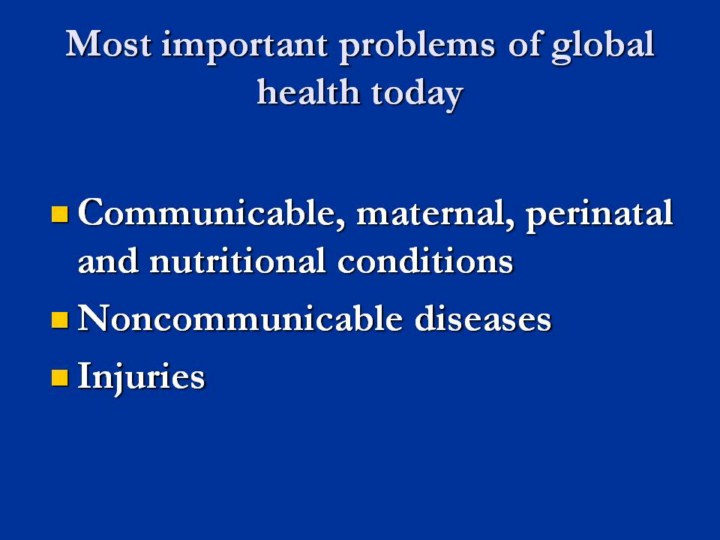| front |1 |2 |3 |4 |5 |6 |7 |8 |9 |10 |11 |12 |13 |14 |15 |16 |17 |18 |19 |20 |21 |22 |23 |24 |25 |26 |27 |28 |29 |30 |31 |32 |33 |review |
 |
What are some of the most important problems in global health today? The landmark 1996 publication, “The Global Burden of Disease”, presented data from 1990 with data projections out to 2020 for three broad cause groups of health problems that, collectively, constitute the world's total disease burden. These are: Group 1, communicable, maternal, perinatal and nutritional conditions; Group 2, noncommunicable diseases; and Group 3, injuries. Within each of these broad groups are more specific conditions. The 15 leading individual problems, based on DALYs (disability-adjusted life years) , were: (1) lower respiratory infections; (2) diarrheal diseases; (3) conditions arising during the perinatal period; (4) unipolar major depression; (5) ischemic heart disease; (6) cerebrovascular disease; (7) tuberculosis; (8) measles; (9) road traffic accidents; (10) congenital anomalies; (11) malaria; (12) chronic obstructive pulmonary disease; (13) falls; (14) iron-deficiency anemia; and (15) anemia.
Non-communicable diseases are the most widespread diseases seen by the majority of medical students in their practice. We need to work together to share our knowledge about these conditions for prevention and cure. |